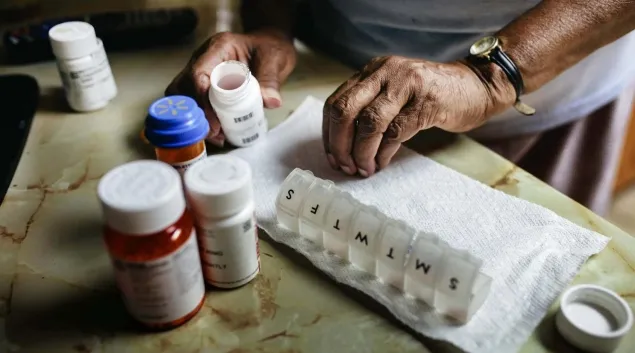
Photo: Willie B. Thomas/Getty Images
The departments of Labor, Health and Human Services and the Treasury are seeking public input on how to improve prescription drug price transparency.
In a jointly issued Request for Information, the departments are soliciting input on drug price disclosure requirements, including information on existing prescription drug file data elements, and on implementation generally, such as the ability of health plans to access necessary data for reporting, as well as state approaches and innovation.
The agencies also released updated guidance for health plans and issuers that sets an applicability date for publishing an enhanced technical format for disclosures. This is designed to eliminate duplicative and irrelevant data and make cost information easier to understand, the departments said.
WHAT'S THE IMPACT
Separately, the Centers for Medicare & Medicaid Services released new guidance, available on the Hospital Price Transparency resources website, requiring hospitals to post the actual prices of items and services rather than estimates.
CMS also issued its own RFI to gather public feedback on how to boost hospital compliance and enforcement and ensure data shared is accurate and complete.
That action stems from Executive Order 14221, "Making America Healthy Again by Empowering Patients with Clear, Accurate, and Actionable Healthcare Pricing Information," which directs the Secretaries of Treasury, Labor, and Health and Human Services to overhaul price transparency regulations.
The departments said these moves would strengthen the Transparency in Coverage final regulations, which require health plans and insurance companies to publicly post in-network rates, out-of-network allowed amounts, billed charges and negotiated prices for prescription drugs.
They also said they would strengthen the Hospital Price Transparency final regulations, which require hospitals to publicly post standard charges, including gross charges, cash prices, payer-specific negotiated rates and the minimum negotiated charges – in an easy-to-understand format for shoppable services.
THE LARGER TREND
Trump issued Executive Order 14221 in February, stipulating that federal agencies should reinforce rules, set forth in a previous order, requiring health insurers and providers to disclose healthcare prices more transparently.
The administration decried what it called "hidden" prices and said that "opaque" pricing arrangements have allowed hospitals and insurance companies to operate without sufficient accountability, leading to patients shouldering the burden of healthcare costs.
ON THE RECORD
Carol Skenes, chief of staff at Turquoise Health said, "Since January 1, 2021, the healthcare industry has been in a period of price transparency transformation. Meaningful changes are already underway, but the new guidance and FAQs today confirm that additional tweaks are needed to both the hospital and payer data standards to create better user experiences for those working with the machine-readable files (MRFs). We also need enforcement dates and deliverable frameworks for both the Prescription Drugs File and the estimates required by The No Surprises Act (NSA). Those estimates ultimately fulfill the consumer protections promised for insured and self pay patients The NSA, which was not mentioned in today's press release from HHS, includes Good Faith Estimates that include convening and co-providers along with Advanced Explanations of Benefits."
Jeff Lagasse is editor of Healthcare Finance News.
Email: jlagasse@himss.org
Healthcare Finance News is a HIMSS Media publication.